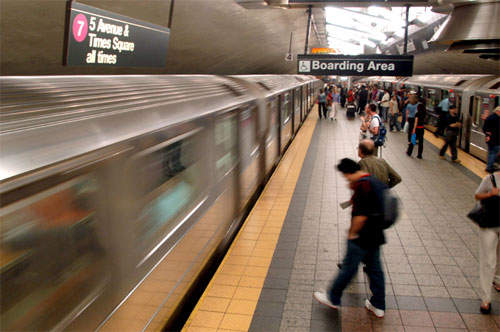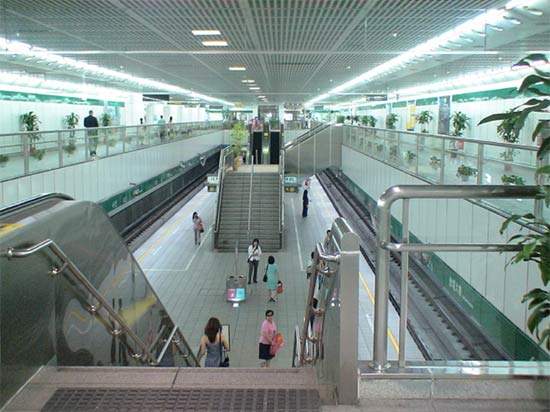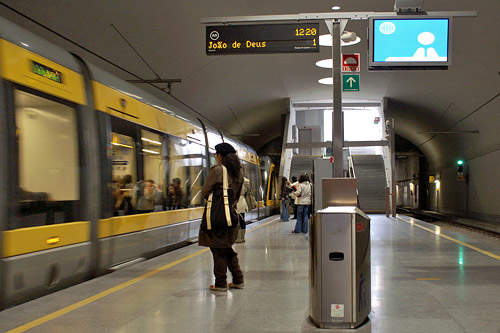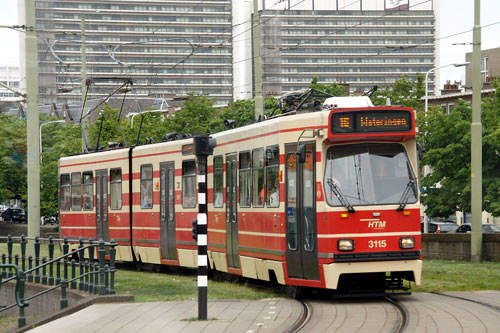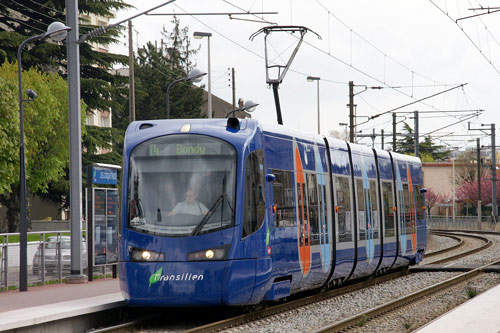With around 45% of the national population, the growing metropolis of Tel Aviv at the centre of Israel’s largest urban area,Gush Dan, has been considering a rail-based mass transit system since the mid-1960s. Development has been held back by severe financial and political disagreements.
When the mass transit for Tel Aviv was first discussed it was specifically for a sub-surface metro operation. Physical work only got as far as the construction of one underground station underneath the 34-storey Shalom Meir tower block, which was completed in 1965. However, rails were never laid, and it has continued to stand as an empty station beneath the building.
Forty years on, new plans were released for a Tel Aviv mass transit system to provide a reliable way of moving thousands of travellers. This assists a suburban railway network which shares track with intercity services, then offering a maximum frequency of only three trains per hour. There is an extensive network of bus routes, the dominant public transport in Israel, but the continuing sprawl of the conurbation and major traffic congestion issues make road journeys difficult and time-consuming.
The project
The Metropolitan Mass Transit System Ltd was founded in 1997 and charged with planning and implementing the mass transit urban network, provisionally the country’s largest infrastructure project. The plans were developed in the late 1990s and released in 2000. They brought a new concept of a mixed light rail and metro mass transit, with both underground and ground level
running. The first phase is two lines costing around $3bn. The proposal was to run 40km (25 miles) from south to east (Red Line) and from the south to central Tel Aviv (Green Line).
The bidders were the Speedam Group (including Bombardier, Terna of Greece and Ansaldo Breda of Italy); Metro Rail (Israeli manufacturing companies Shikun u’Binui and Ashtrom plus Connex from France and Zublin of Germany), and the Mass Transportation Solution Group (Israeli bus company Egged, Siemens of Germany, HTM of Den Haag, Soares da Costa of Portugal and CCECC of China.)
In spite of an earlier indication of Siemens possibly withdrawing from the project due to concerns over the tender specifications, the winners were MTS. The agreement for the Red Line was signed in November 2007. The contract is based on a 32-year build-operate-transfer agreement, with the system then being handed back to public ownership. Around 45% of the project cost is in respect of construction and infrastructure, with 30% apportioned in rolling stock and operating systems.
Infrastructure
Preliminary engineering was carried out by Canadian company Delcan to complete design work for the first two routes.
In common with the Porto system, Tel Aviv is to use an underground metro and light rail system using the same rolling stock. The first project for development is the 22km (13.75 mile) Red Line from Petach Tikvah, west through Bnei Brak, Ramat Gan, central Tel Aviv, Jaffa and terminating at Bat Yam in the south west of the area.
The initial plan indicates 33 stations, ten underground, with an average distance between them of just 500m, and an average of 1km between stations at ground level. Some 12km of the route will be underground, with the rest built to light rail standards.
At the eastern end, the Red Line splits into two branches. From Aharonowitz, one branch goes to Petah Tikva, with the other heading to Em HaMoshavot and the maintenance facility at Kiryat Arye. The total cost of the Red Line was estimated at $2bn.
Rolling stock
To suit the requirements of Tel Aviv, the vehicle design will have to be capable of carrying large volumes of passengers and also operate on an underground railway and at street level in light rail style. Siemens are yet to announce the vehicle type to be deployed in Tel Aviv. Their recent main light rail vehicles have been the Combino series of trams and the Avanto/S70 which has seen widespread use in the US, operates Paris T4 and is scheduled for the Mulhouse tram-train scheme.
Signalling and communications
MTS consortium member Siemens will supply the line’s control and communication systems. The project is likely to incorporate features throughout that are consistent with security having a notably high profile in Israel.
The future
The first phase of the 18km Green Line was also approved, and may be built entirely as light rail according to national preference, although some political opinion within the city favours a sub-surface component. It would start in the west at Rishon Le Zion and heads north to Holon and central Tel Aviv, where the final section passes underneath the city. A northbound extension has already been proposed from central Tel Aviv to Yargon River.
In September Africa-Israel Investments contracting subsidiary Danya Cebus Ltd sought to withdraw from its maintenance involvement in the project, with a replacement being sought. On the scheduled opening of the Red Line in 2013, it is estimated are that there will be 90 million annual passenger journeys. Following utilities diversions, underground work was to resume in 2008, with surface construction expected from 2010. MTS is required to hand the line over to the government in good condition.

